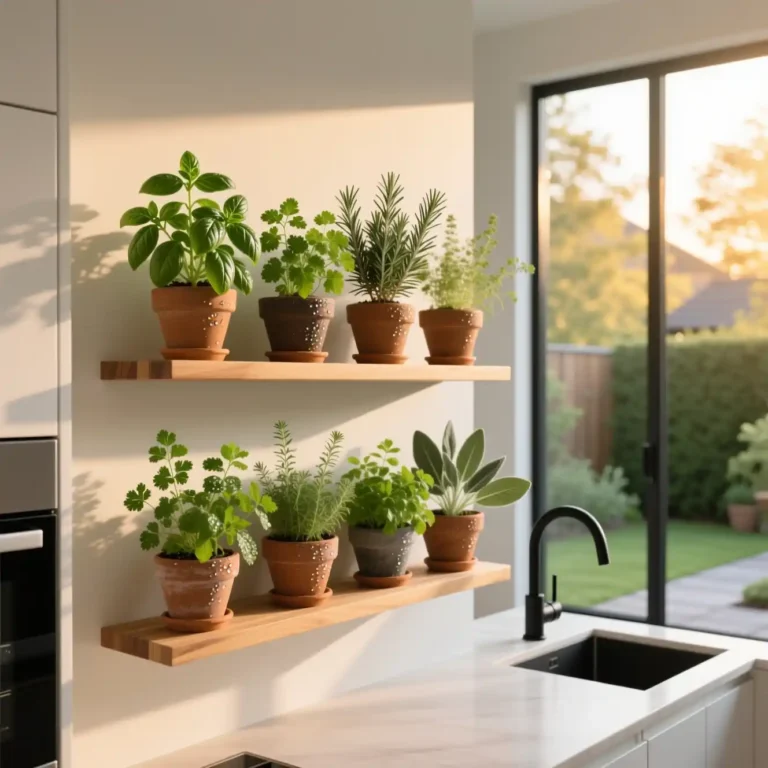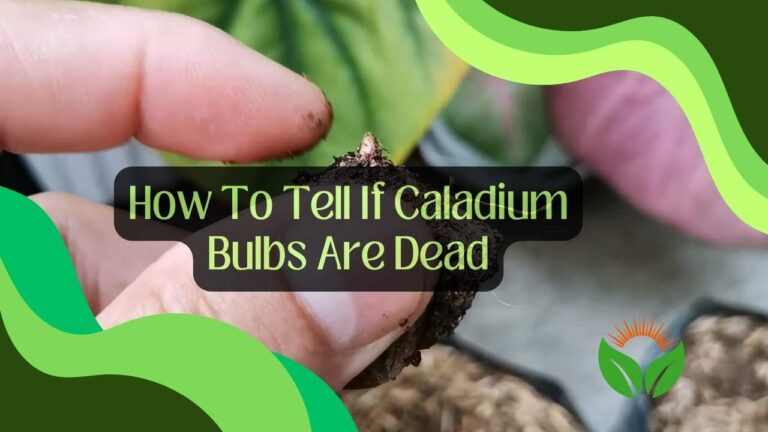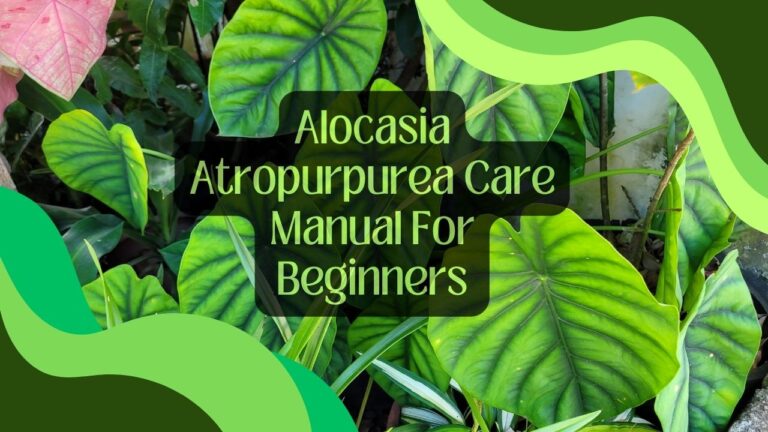5 Hacks to Get Your Alocasia Melo Looking Like a Million Bucks!
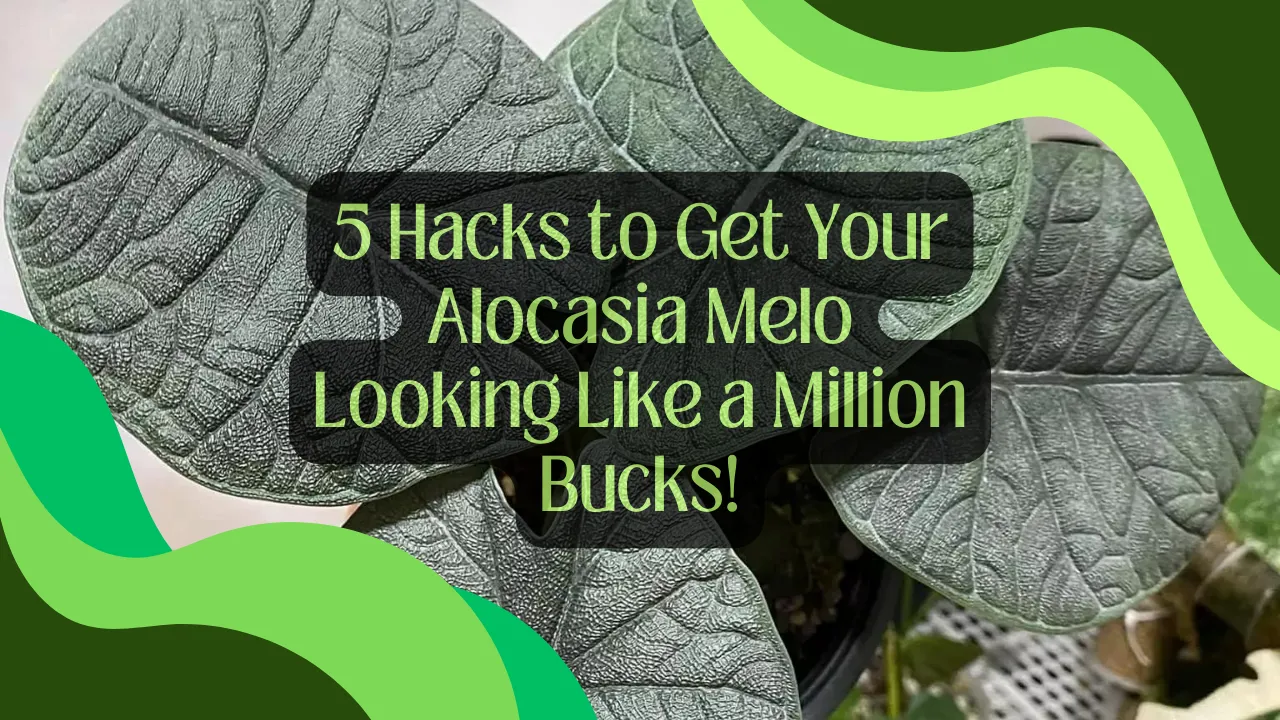
Have you fallen for the stunning, textured leaves of the Alocasia Melo? This houseplant is a real head-turner with its unique charm. But here’s the best part: it’s easier to care for than you might think!
The Alocasia Melo thrives in warm, humid environments. Its unique foliage requires specific conditions to flourish. So, a little bit challenging for even the most seasoned plant enthusiasts. From watering techniques to light requirements, every aspect of its care needs proper addressing!
Wondering if you cannot take proper care? Fear not! With the right guidance and dedication, this plant will transform any living space into a verdant oasis! Let’s learn the guidelines!
Quick Overview of the Alocasia Melo
Just before I start sharing the proper guidelines, here’s a quick overview of the plant. Let me introduce the plant to you, first!
| Alocasia Melo | Descriptions |
| Plant Family | Araceae |
| Origin | Southeast Asia |
| Growth Habit | Herbaceous Perennial |
| Leaf Shape | Heart-shaped |
| Leaf Patterns | Intricate Veining |
| Mature Size | 2-4 feet tall |
| Light Requirements | Bright, Indirect |
| Water Needs | Consistent Moisture |
| Humidity Preference | High Humidity |
| Temperature Range | 65°F – 85°F |
| Soil Type | Well-draining |
| Toxicity | Toxic to Pets |
How to Care for Alocasia Melo? A Complete Guide!
The Alocasia Melo, a true gem of the plant kingdom, demands our utmost attention and care to showcase its full splendor. With its striking elephant ear leaves and intricate patterns, this exotic beauty captivates all who behold it.
#Guide 1: Understanding the Alocasia Melo’s Natural Habitat

The Alocasia Melo hails from the lush rainforests of Southeast Asia, where it thrives in warm, humid, and shaded environments. In its native habitat, this tropical plant basks in the filtered sunlight that penetrates the dense canopy, while enjoying the consistently high humidity levels and warm temperatures.
To recreate these conditions indoors, it’s essential to understand and mimic the Alocasia Melo’s natural habitat as closely as possible.
#Guide 2: Light Requirements
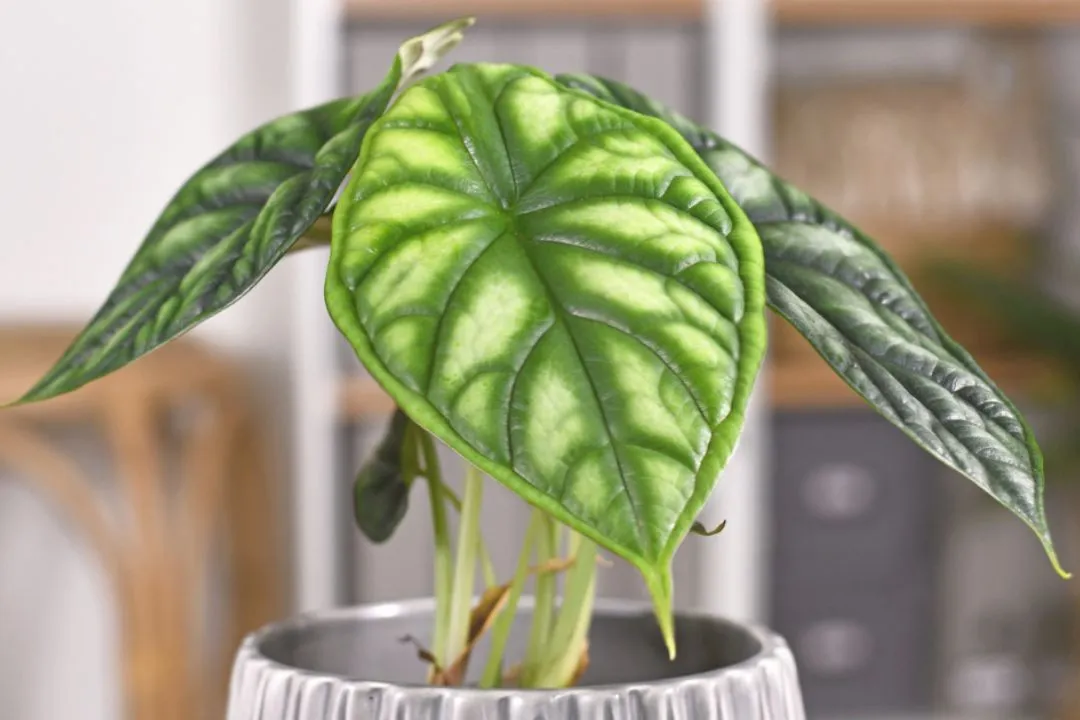
The Alocasia Melo prefers bright, indirect sunlight. Direct sunlight can scorch its delicate leaves, causing discoloration and damage. Aim to provide the plant with bright, filtered light, such as that found near an east or west-facing window.
If natural light is limited, supplement with grow lights or strategically placed lamps. Inadequate light can lead to stunted growth, leaf drop, and a loss of vibrant coloration.
#Guide 3: Watering and Humidity Needs
Consistent moisture is crucial for Alocasia Melo’s well-being.
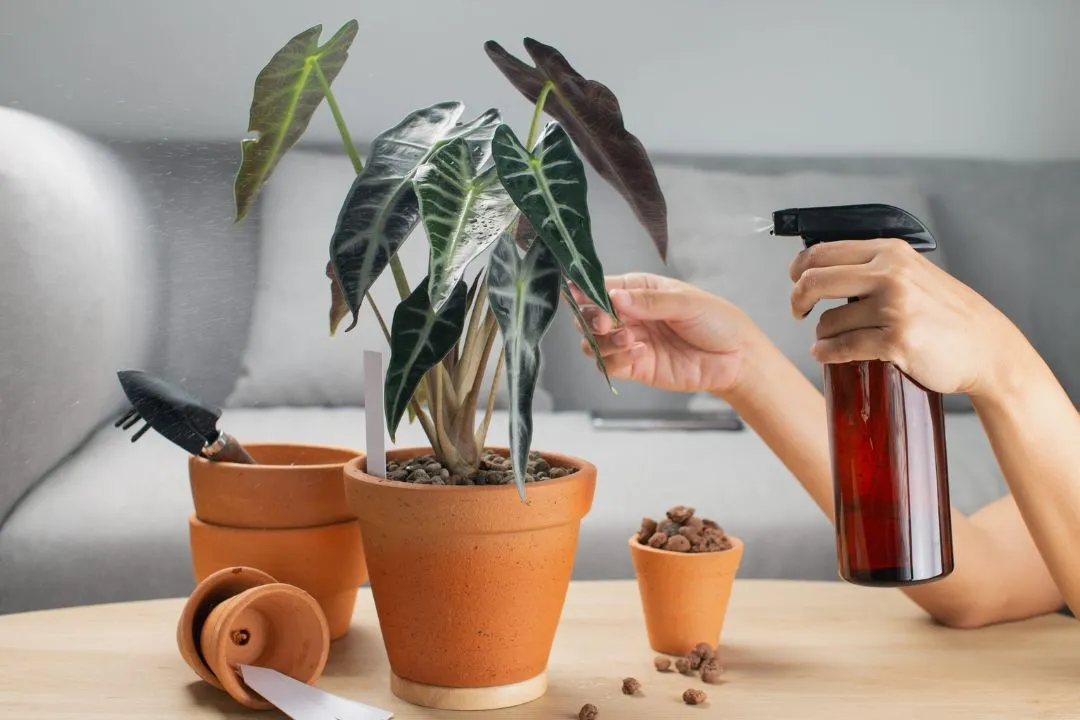
Allow the top inch or two of soil to dry out before watering thoroughly, ensuring the excess moisture drains away. Avoid letting the plant sit in standing water, as this can lead to root rot.
Also, the Alocasia Melo thrives in high-humidity environments, preferring humidity levels above 50%. To increase humidity, consider using a pebble tray, humidifier, or grouping plants.
#Guide 4: Soil and Potting Considerations

The Alocasia Melo requires a well-draining, nutrient-rich soil mix. A combination of peat moss, perlite, and bark or coir can provide the ideal growing medium.
Choose a pot with drainage holes to prevent waterlogged soil, and ensure it’s sized appropriately for the plant’s root system. Repotting must be done every 2-3 years in the spring, using a slightly larger container and fresh soil.
#Guide 5: Temperature and Fertilization
The Alocasia Melo thrives in warm temperatures ranging from 65°F to 85°F (18°C to 29°C).
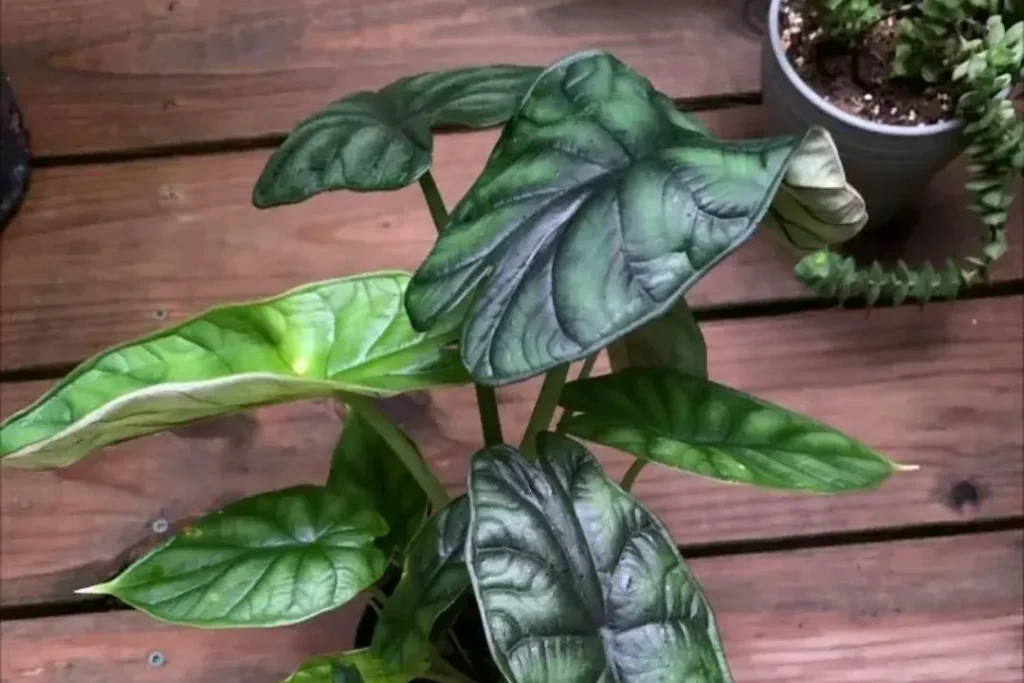
Avoid exposing the plant to drafts or sudden temperature fluctuations. During the growing season (spring and summer), feed the plant with a balanced, liquid fertilizer every 4-6 weeks.
In the winter months, reduce fertilization to once every 6 to 8 weeks. Proper fertilization will encourage lush, vibrant foliage and overall plant vigor.
Would love to know more? See the video of Alocasia Care!
Tips for Reviving A Struggling Alocasia Melo
Noticed your Alocasia Melo looking a bit down lately. Don’t sweat it; we’ve all been there. But guess what? There’s hope! With a touch of care and these handy tips, we’ll have your Alocasia back to its vibrant self in no time.
Now, let’s play detective. Drooping leaves, crispy edges, or slow growth—sounds familiar? It’s due to –
👉Underwatering
👉Drowning it with too much love (aka overwatering)
👉Not giving it the right light
👉Forgetting about its humidity needs.
Now, be sure you are not doing the points I mentioned ABOVE, and see how it survives like magic!
Why You Should Grow Alocasia Melo and Why You Should Not?
As you decide to grow some Alocasia Melo, learn the pros and cons, first. It’ll be helpful to decide whether the plant meets your needs or not!
Why You Should Grow Alocasia Melo?
👉Alocasia Melo has stunning heart-shaped standout leaves that you’ll love!
👉Despite its exotic looks, Alocasia Melo is easy to care for.
👉It stays small, reaching only 2-4 feet tall when fully grown.
👉Its tropical appearance adds a touch of natural beauty to any room.
Why You Might Not Want to Grow Alocasia Melo?
👉Keep it away from curious pets or small children, as it can be harmful if ingested.
👉It loves humidity, which is hard to maintain in drier climates or indoors without proper humidity control.
👉Overwatering can lead to root rot.
👉In colder areas, it goes dormant in winter, requiring some adjustments.
FAQs
Want to learn more about Alocasia Melo? Check out the following queries and answers!
Q. Is Alocasia Melo a slow grower?
Yes, the Alocasia Melo is considered a slow-growing plant. With proper care and ideal conditions, it only grows a few inches taller each year.
Q. How often should I water my Alocasia Melo?
Consistent moisture is key, but avoid overwatering or letting the plant sit in standing water.
Q. Why are the new leaves on my Alocasia Melo coming in smaller?
Smaller new leaves may signal that the plant is rootbound or lacking nutrients. Consider repotting or adjusting your fertilization routine.
Conclusion
The Alocasia Melo is a real head-turner, catching the eye of plant lovers everywhere with its unique look. All you need is some TLC for this slow-growing plant! With its pattern of leaves, it turns any space into a lush paradise.
Just think about where it’s from and what it likes—light, water, humidity, soil, and temperature. And don’t be afraid to get this plant as you already have the best guides to follow!




